Do you know the symbolism of flowers? I know that yellow often represents jealousy, and red roses are a classic symbol of love. But beyond that, I didn’t know much about what flowers really symbolize. Since it’s all about color for me, of course, I had to dive deeper into the meanings behind them. I’ve always found these interpretations interesting, which is why I decided to do a little research and share what I’ve discovered with you. This will probably be the start of a series where I explore the symbolism of different flowers. And of course, I’m starting with violet – since it’s the color of the month in my current project.
Violet flowers, with their soft petals and stunning colors, have always been loved for their beauty and sweet fragrance. But they’re not just pretty to look at – they also carry a lot of meaning. In different cultures, violets are seen as symbols of things like spiritual growth, transformation, and finding inner peace. It’s no wonder they’ve got such a powerful and poetic vibe.
But before we start to dive deeper in the symbolism, I’d like to share some personal memories I have with certain violet flowers.
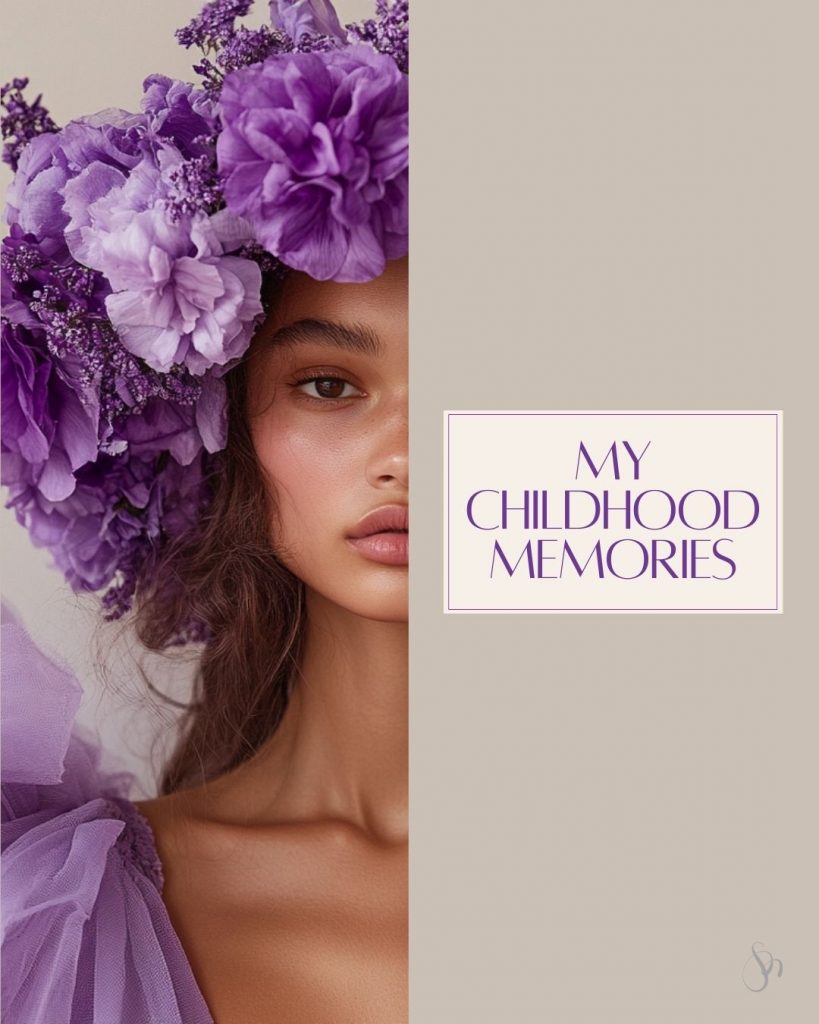
Violet Flowers: My Personal Stories
When I was a child, we loved picking Violets, and I remember finding a particularly beautiful, large variety once. I brought it home with its roots (oops!), hoping to plant it. My grandmother and I planted it together in our front yard, and over the years, those violets spread so much that the entire yard was full of them. Even today, after nearly 35 years, they’re still there. It’s incredible to think that something as simple as planting a little flower with my grandmother has lasted so long. Even though she has dementia and might not remember that we planted them together, I still cherish the memory, knowing that the flowers are a lasting reminder of that special moment.
Then there are Lilacs – I absolutely love them. All the shades of lilac, and especially the scent, which takes me straight back to my childhood. Whenever I smell lilacs, I’m transported to those carefree days of spring when we would spend hours outside with friends. We’d even search for lilac flowers with exactly five blossoms because we believed they would bring good luck. It was a simple, joyful tradition, and every time I smell lilacs, I’m reminded of those happy, carefree moments.
I also remember the Irises growing by the stream near my aunt’s house. And now that I think about it, her house was completely decorated in lilac – furniture, walls, everything – because lilac was her favorite color at the time. How funny, I had totally forgotten that!
Then, there were the Thistles. As kids, we’d throw them at each other or sneakily stick them to each other’s sweaters just for fun. Sometimes we’d wear them like little brooches. Back then, there were no online games, so we spent a lot of time outdoors, being really creative. Haha, those were the days!
And, of course, there were the little purple meadow flowers that tasted so sweet. We’d pluck the petals and suck the juice out of them. I had to google the name – Lamium purpureum.
That was all back in Yugoslavia when I was little. But, there are certain flowers I only associate with Germany, where I live now. For example, Purple Tulips – I first saw them here. I had never seen them in Serbia. Of course, you can find them there now, but when I moved abroad, 25 years ago, I don’t recall ever seeing purple tulips back then.
Another flower we didn’t have where I lived in Serbia was Purple Crocuses. When I arrived in Germany, I was amazed to discover these beautiful purple carpets of crocuses in the spring. Such a lovely sight!
And then there’s the Purple Orchid – it was my very first plant in my first apartment here in Germany. My parents gave it to me, and it lived for a long time, even though I have to admit, I didn’t take care of it much. Back then, I worked 10-hour days at an architecture company and spent nearly two hours commuting each way. I hardly had the energy to take care of myself, let alone a plant. I’m so glad those office hours are behind me now.
Lastly, Wisteria, one of my absolute favorite flowers. Wisteria, also known as Glycinia comes in several beautiful colors, and I love them all. They always remind me of something out of a fairy tale – so beautiful and romantic. I enjoy seeing them every year here in the Botanical Garden in Munich.
But the story of wisteria at our house is a bit bittersweet. When we moved in over 11 years ago, we found a wisteria plant growing in our garden. It was so lovely, and we were thrilled at first. Unfortunately, we ended up ripping it out. Our kids were only 2 years old and a baby at the time, and we discovered that wisteria is toxic. Once the plant had climbed up to the balcony and near the railing outside the kids’ room, we worried they might try to eat it. We were young and inexperienced, like many new parents, filled with caution and fear. Looking back, I know I would never have left such a small child alone on the balcony, and when they got older and understood not to touch the plant, I wouldn’t have had to worry. To this day, I regret it. I can only imagine how beautiful that wisteria would have become after 11 additional years of growth. What a shame.
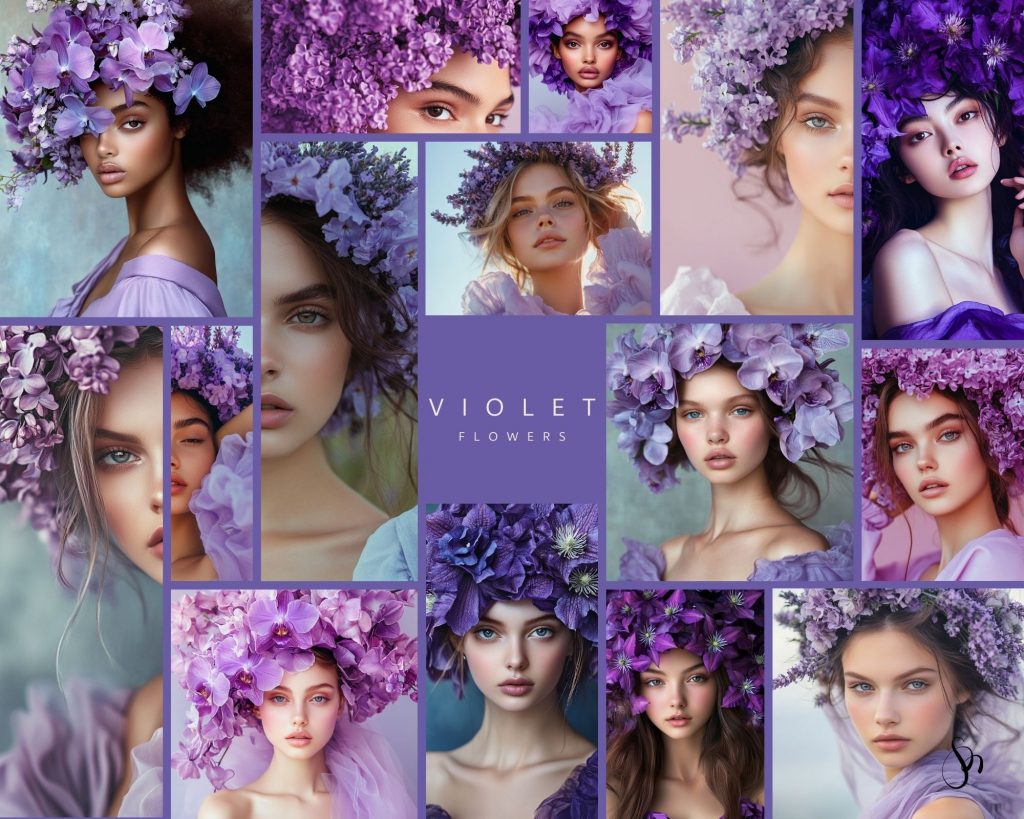
The Meaning of Giving Violet Flowers as a Present
Violets, as well as other purple and violet flowers, have been valued throughout history for their beauty, fragrance, and the messages they convey. Here’s a breakdown of the main meanings behind gifting violet flowers:
1. Love and Affection Violet flowers are strongly associated with love and devotion. In the language of flowers, they symbolize loyalty, fidelity, and everlasting love. Giving violets can represent a deep affection and commitment, whether the relationship is romantic, familial, or even a friendship that carries long-lasting bonds.
2. Spiritual Growth and Transformation Violet flowers, especially in their association with the color violet, are closely tied to spiritual awakening and personal transformation. The color violet is connected to the crown chakra, which governs spiritual enlightenment and higher consciousness. By presenting violet flowers, you may be encouraging the recipient to explore their own spiritual growth or inviting them to embark on a transformative journey. It’s a gift that suggests growth, introspection, and awakening.
3. Humility and Modesty Unlike more flamboyant flowers, violets are often viewed as symbols of humility and modesty. Their understated beauty, often hidden among leaves or in shaded areas, makes them a symbol of quiet grace. When you gift violet flowers, it can convey a recognition of these values in the recipient. It’s a way of acknowledging someone’s humble nature, sincerity, and authentic presence.
4. Respect and Admiration Violets are also symbols of respect and admiration. Presenting violets as a gift can show that you hold the recipient in high esteem. This gesture can reflect your admiration for their character, their achievements, or the positive impact they have had in your life. It’s often chosen as a respectful token of appreciation for someone who has been a mentor or someone whose qualities you deeply respect.
5. Remembrance and Loyalty Violets are linked to the idea of remembrance, often associated with people we want to honor or remember. In the Victorian era, they were used as a symbol of „faithfulness“ and “I’ll always remember you.” If you give violets, you might be subtly conveying a message of commitment, whether in a relationship or a sign that you will remember someone or a shared experience. It’s a thoughtful way to signify loyalty and long-lasting affection.
6. Peace and Tranquility Violets are calming, peaceful flowers. Their soft fragrance and gentle appearance can evoke a sense of inner peace and serenity. Gifting violets may be a way to wish the recipient tranquility or provide a comforting, calming presence. Whether someone is going through a challenging time or simply needs a reminder of peace in their life, violets carry a message of balance and soothing energy.
7. Innocence and Purity Purple flowers, including violets, often symbolize innocence and purity. These flowers are sometimes gifted to convey the beauty of untainted love and innocence, making them ideal for new beginnings or celebrations of purity, such as the birth of a child or a fresh start in life. The delicate nature of violets represents these qualities, bringing a gentle energy to the relationship.
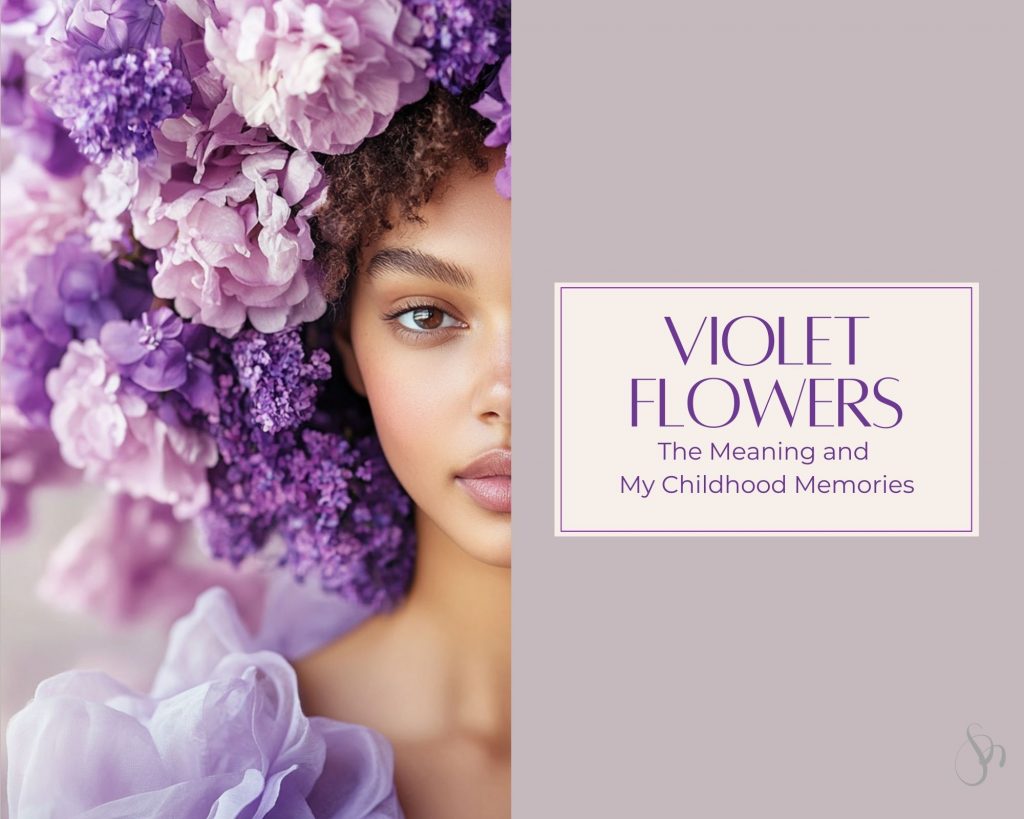
Flower Colors – Different Symbolism in Different Cultures:
Western cultures: Purple flowers often represent royalty, nobility, and elegance. They can also symbolize spirituality and wisdom.
Thailand: Purple flowers are linked to mourning and respect for the deceased, often seen in funeral arrangements.
India: Purple flowers may symbolize spiritual growth and inner peace, sometimes used in religious contexts.
The Healing Power of Violet Flowers
Violets
In addition to their spiritual significance, violets are also recognized for their healing properties. The flower has been used in traditional herbal medicine to treat a variety of ailments, including respiratory issues, skin conditions, and digestive problems. The soothing, calming energy of violets is believed to promote emotional healing, ease anxiety, and bring a sense of tranquility. Their medicinal qualities serve as a reminder that healing is not only physical but also deeply emotional and spiritual.
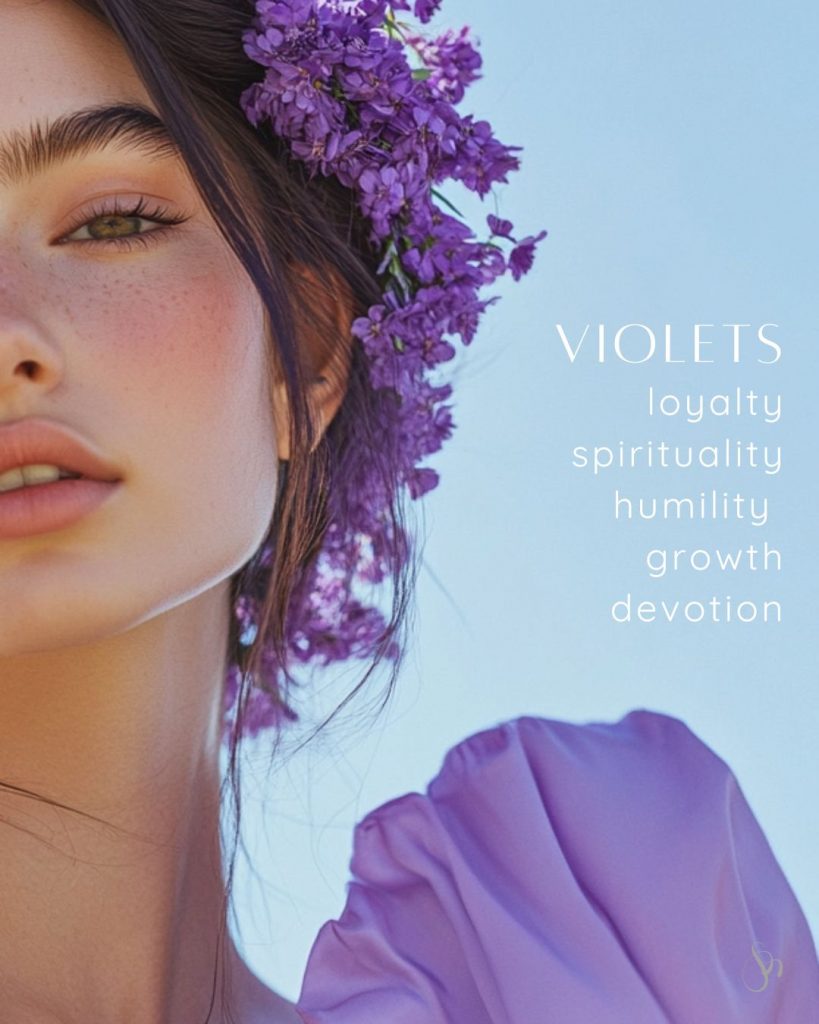
Lavender
Lavender, with its soothing scent and calming color, is closely tied to the themes of peace, tranquility, and spiritual clarity. Like violets, lavender represents healing and purification, both physically and emotionally. Its use in aromatherapy and in relaxing teas further emphasizes its connection to calmness and inner peace. Lavender also symbolizes devotion, much like violets, and is often associated with loyalty and love.
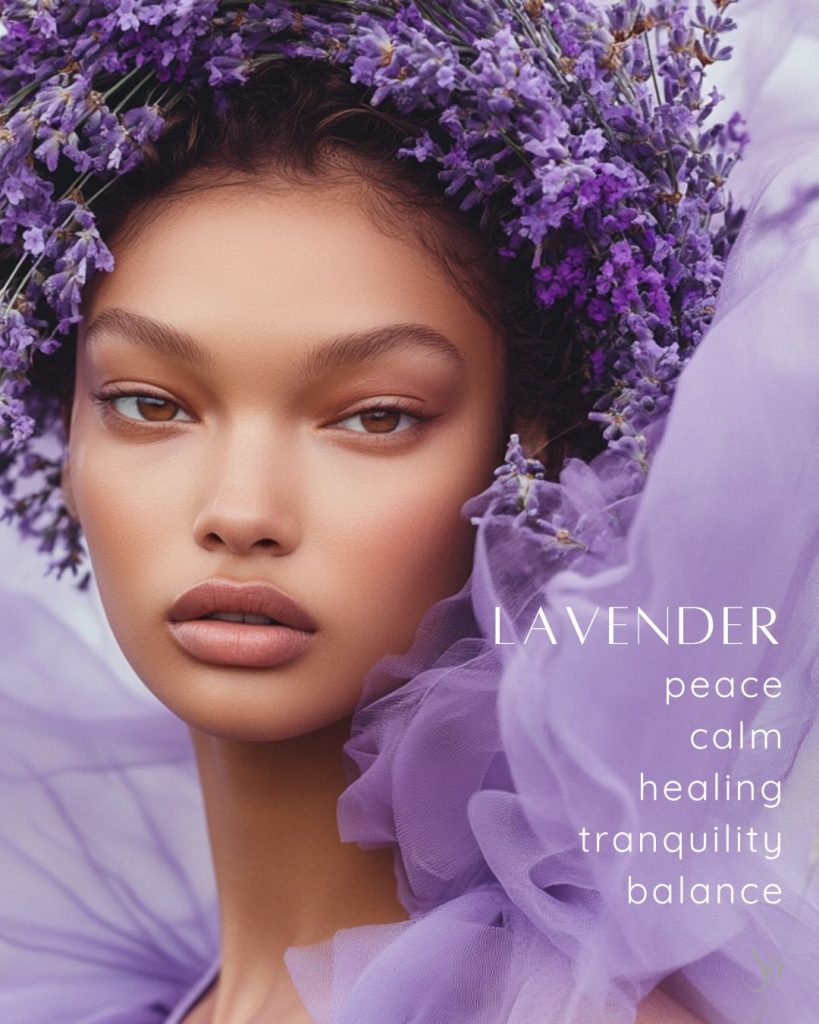
Lilacs
Lilacs, with their soft purple hue and fragrant blossoms, are symbols of renewal, purity, and spiritual awakening. They are also connected to love and romance, representing the beauty of new beginnings. The gentle nature of lilacs makes them a perfect symbol for nurturing love and connection, much like violets. The lilac’s symbolism of renewal makes it especially poignant when celebrating new chapters in life or personal transformation.
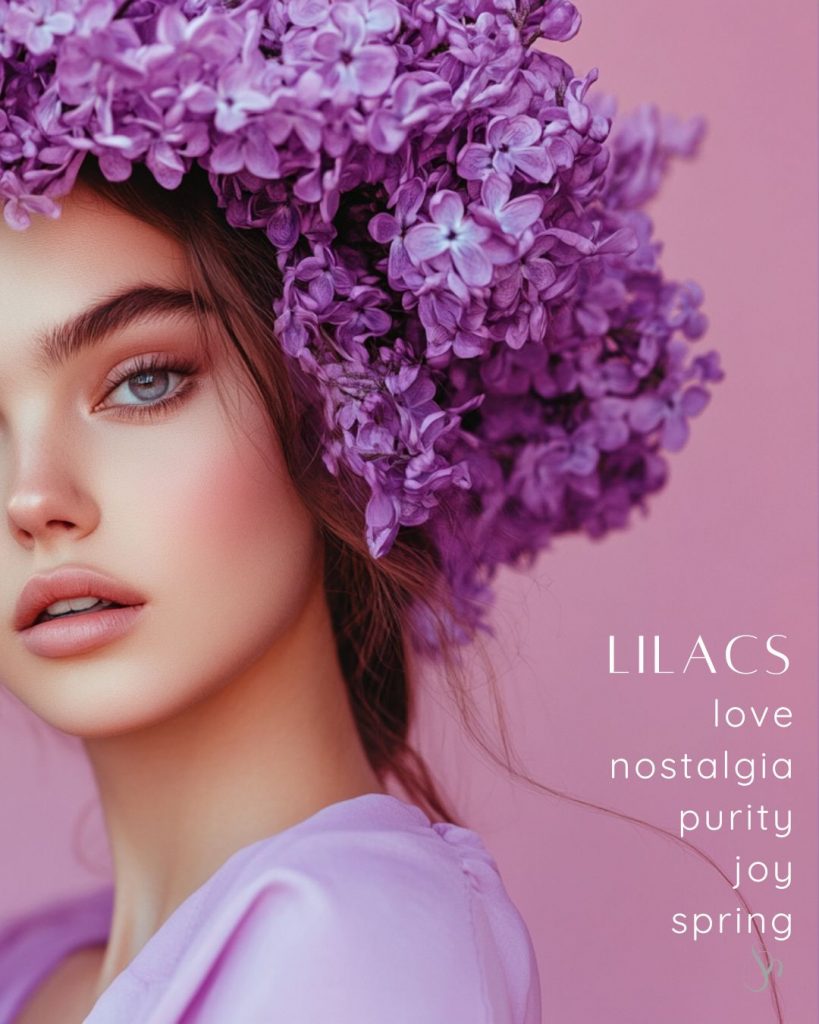
Orchids
Orchids, often found in deep purple and violet tones, embody luxury, strength, and beauty. Their exotic appearance and rarity elevate them to a status of grace and refined elegance. Orchids can symbolize love, fertility, and beauty in a very profound way. While violets are more modest in their symbolism, orchids carry a more opulent message of strength and admiration, adding an element of prestige to the flower’s meaning.
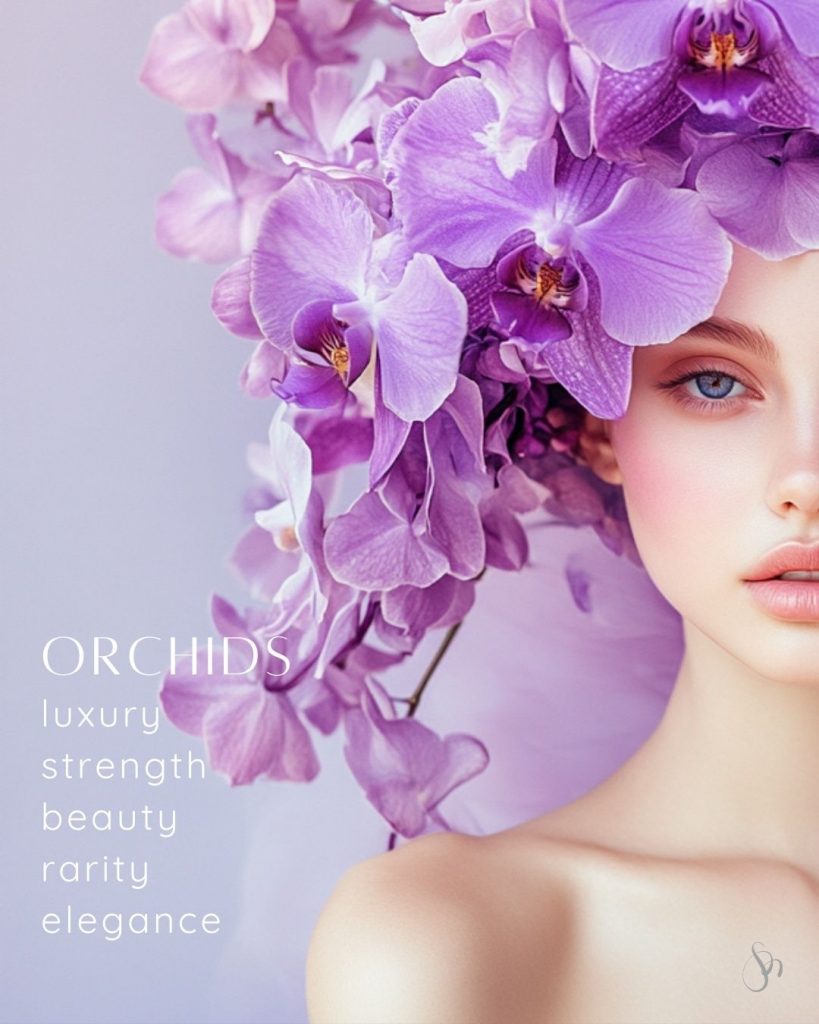
Clematis
Clematis flowers, with their rich purple shades, symbolize mental clarity, ingenuity, and inspiration. These flowers are associated with the pursuit of knowledge and higher thought. Like violets, clematis offers a path towards spiritual growth, but they add an additional layer of intellect and creativity, making them an excellent symbol for those on a journey of both personal and intellectual expansion.
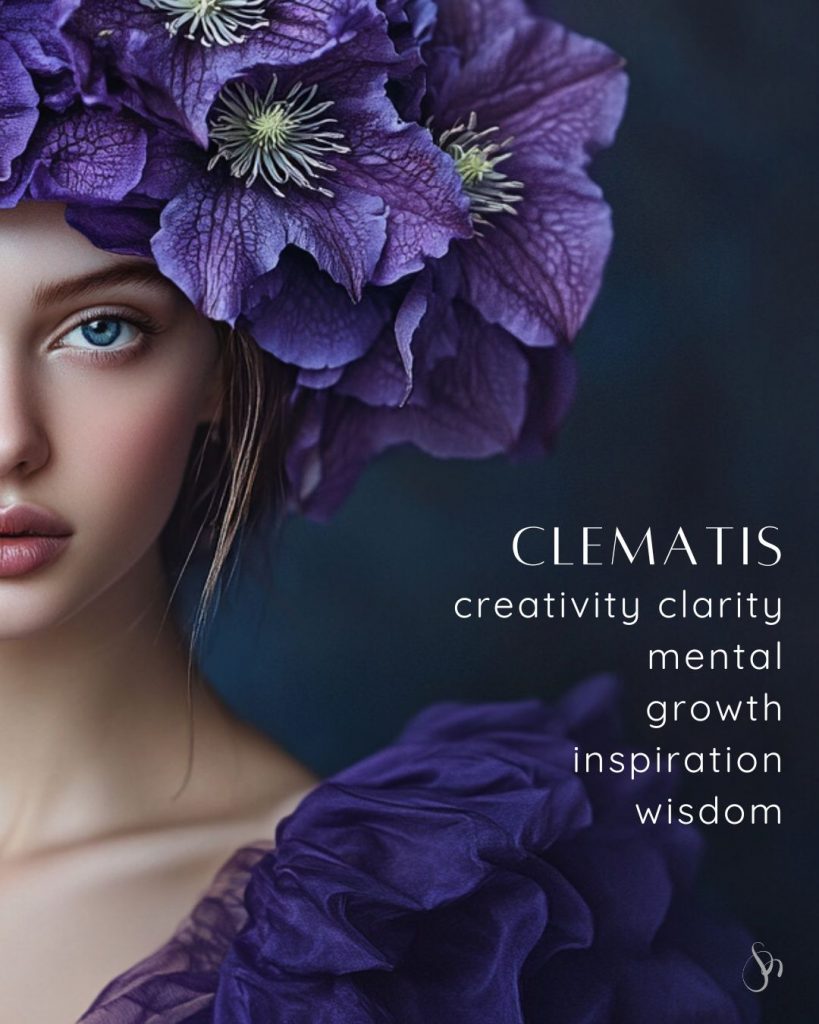
Wisteria
Wisteria’s cascading purple flowers evoke feelings of grace and transcendence. Symbolizing longevity, beauty, and serenity, wisteria is often associated with the unfolding of time and patience. The flower’s quiet beauty aligns with violets in its representation of spiritual peace and inner harmony. The twisting vines also speak to the complexity and beauty of personal growth, much like the transformation process symbolized by violets.
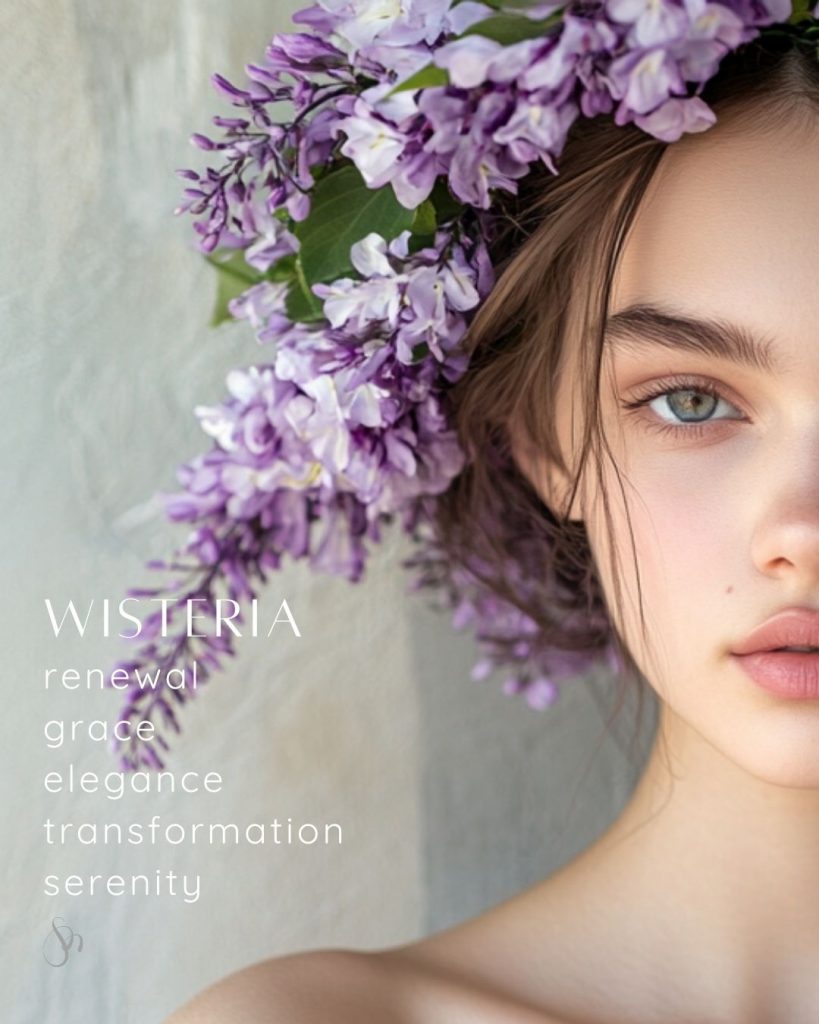
Violets in Your Life: Embrace Their Energy
Whether it’s the beauty or the deeper meaning behind them, violet-colored flowers encourage us to embrace change, grow spiritually, and find inner peace. Having these purple blooms around, whether in your garden or home, serves as a reminder to stay connected to your spiritual journey, practice humility, and nurture love and devotion in all areas of life.
Incorporating these violet hues into your daily life, through their color, fragrance, or even their healing qualities, can bring a subtle but powerful shift in your energy. They’re the perfect flowers for anyone seeking a deeper connection to themselves, the world, and something greater.
I’d love to hear from you! What’s your favorite violet flower? Do you have any childhood memories tied to these beautiful blooms? Feel free to share in the comments – I’d love to read your stories!



